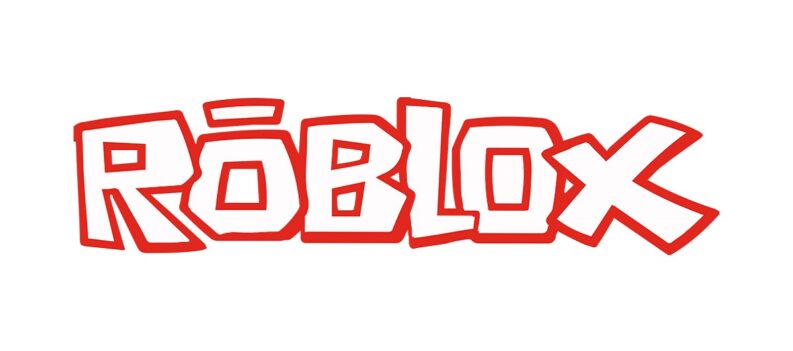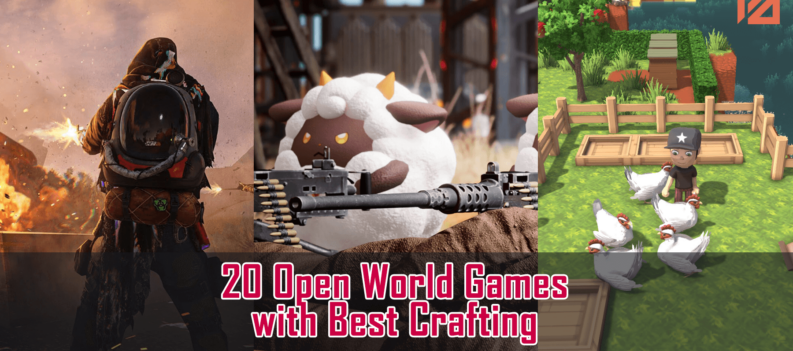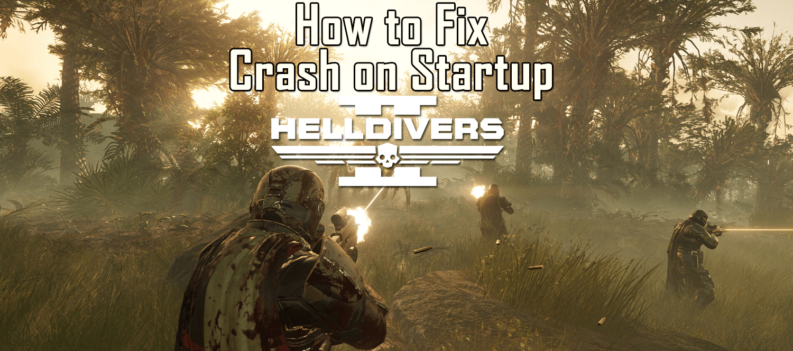I was fortunate enough to get my hands on Windbound way before release to do a preview piece, and so I went into the game with a little more knowledge and comfort than I’m normally afforded with reviews.
Before I go any further, I have a confession to make. I cheated when I played the preview. The email with the preview code and materials had cheat codes included, and I’m not above that temptation. Forgive me, for I have committed the most common gamer sin. And… I even tried to do it again on PS4. The PC cheats are done with a keyboard, and I plugged my USB keyboard into my PS4 in the hope I’d be able to beat the system. I didn’t. I had to play as a commoner.
With that in mind, my full Windboud experience was a little different to my taster provided in the preview, but it’s not any worse for it. I was impressed with the game early on, and that hasn’t changed. If anything, I like it even more now that I’m playing it the “right” way.
Windbound puts you in the sodden rags of Kara, a strong warrior who is now lost at sea. An unfortunate accident, or perhaps fate?
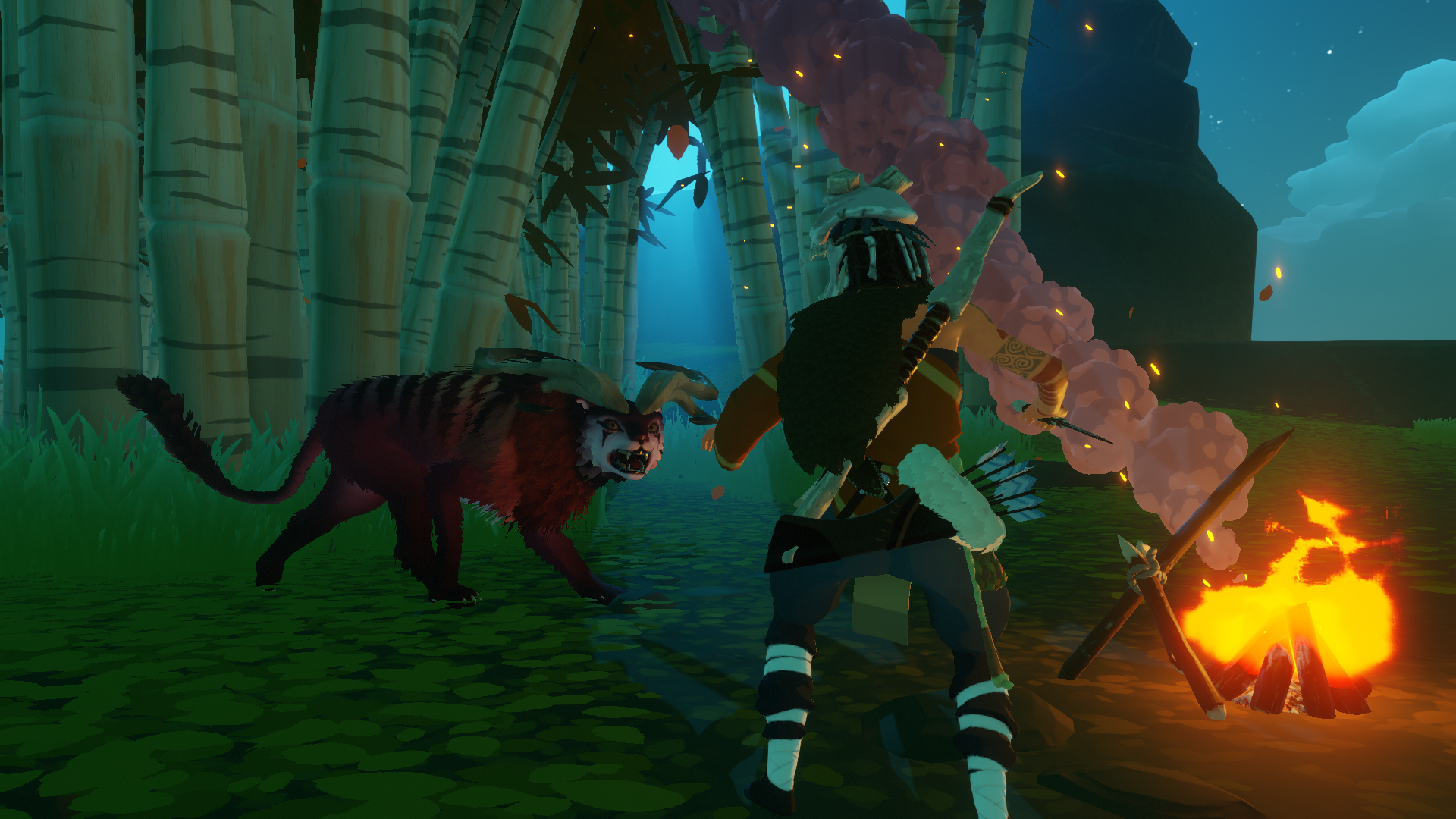
You start the adventure with a decision to make: will you play in survival mode, or in adventure mode. In survival mode, when you die, you lose it all. In adventure mode, when you die, you only lose a little pride and progress. I don’t have much pride anyway, so I was happy to lose the progress by playing in adventure mode.
The game is split into chapters, and each chapter presents you with a new set of randomly generated islands to explore, goodies to harvest and craft, animals to battle, and three monolithic structures to scale. Each of these structures has a magical seashell at the top, and once you’ve activated all three, you go to the next chapter via an island with bridges that only form once you’ve activated the magical seashells. It’s very easy to follow, once you know how.
Windbound doesn’t explicitly explain anything to you. Instead, you’ve washed ashore with just a knife and the need to consume to survive. Each island has different resources on it. Some may have lots, others may have barely anything. Managing your inventory, health, stamina, and hunger are big parts of the game, and island life dictates how well you’ll do that.
Your stamina bar is also your hunger bar. Every so often it’ll drop a little, meaning you’re hungry and reducing your available stamina. Stamina is used for swimming, sprinting, and combat, and running low on it during an encounter could be what sends to you a burial at sea. Or at least back to the start of the chapter.
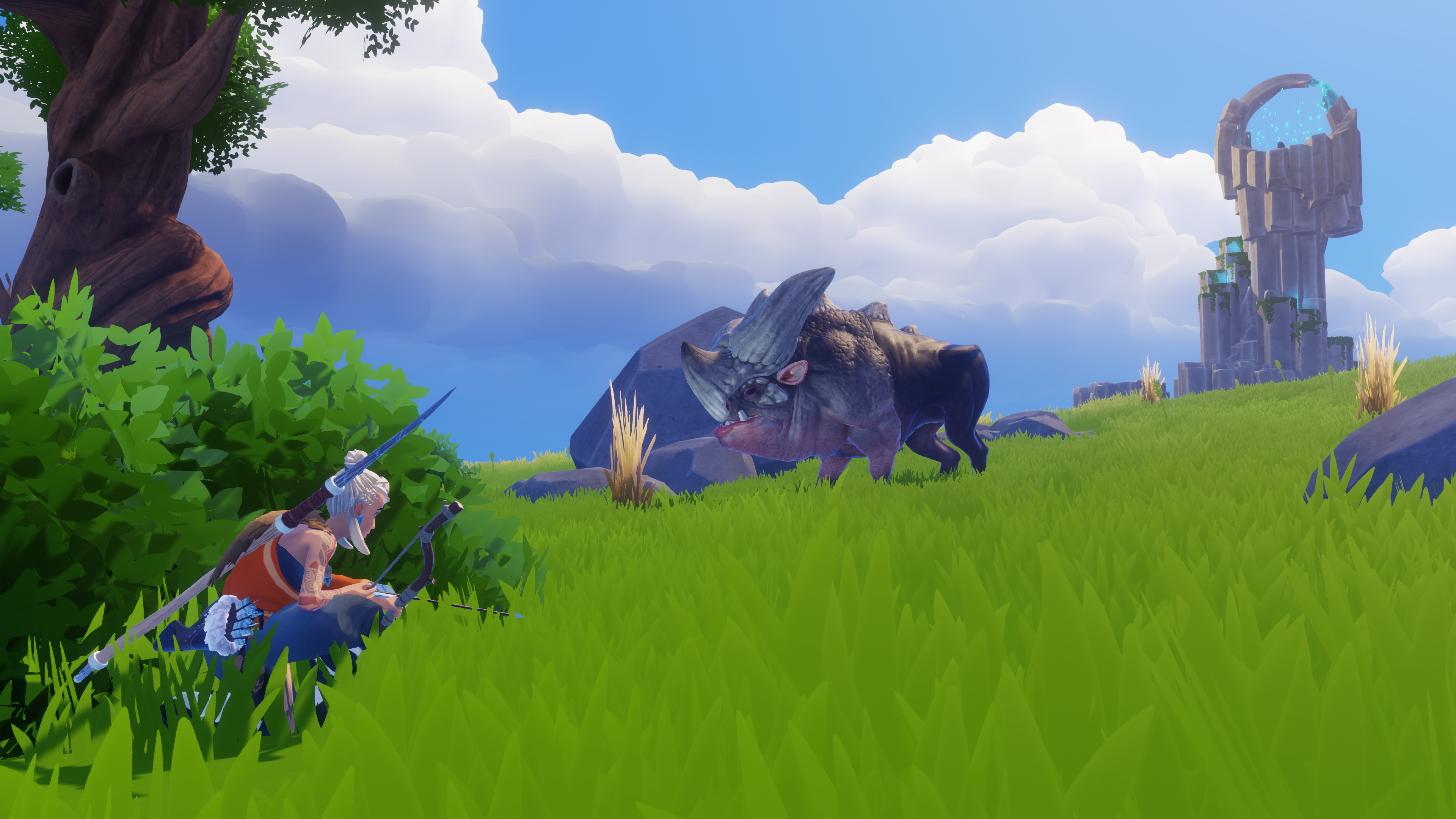
You maintain your stamina and health by eating food. You can forage for berries and mushrooms, or you can kill some of the native inhabitants on the islands and consume their meat. But you’ll need to cook that meat first, otherwise, you’ll get 20 seconds of wobbly camera and only a slight boost to your dwindling stamina bar. It’s a solid, if a little unoriginal, mechanic that always kept me wondering where the next meal would come from. Would I risk going out on my makeshift raft to the next island without first cooking something? Would I stay the night and let my fire cook a decent supply of meat that I can take with me? These were the choices I had to make. I didn’t always make the right decision, mind you, but that’s the beauty with such games; you live, you die, you learn, and you live again. If only real life had an easy mode, eh?
Progression isn’t as straight forward as you’d think. Certain abilities, weapons, and items can only be crafted after making a certain amount of progress, as some of the ingredients won’t show up in the first, or even the second chapters and their islands. Knowing this is key to not spending hours drifting from one island to the next, wondering why you can’t make an axe to cut down trees. It’s a little annoying, and the game doesn’t outright tell you “you can do this, but later” and instead leaves you to figure it out for yourself. For those of us with decent, well developed brains, this isn’t an issue, but I do worry for the younger players who might not understand.
Putting together a sea-worthy craft, stocking it up with the supplies needed, and then battling the open oceans is perhaps my favourite part of the game. While there is combat with the island beasts, I didn’t find it all that great. It works, but it just wasn’t really for me. But I had to do it to get forward. What I really liked doing was sailing the open seas, and tackling whatever came my way.
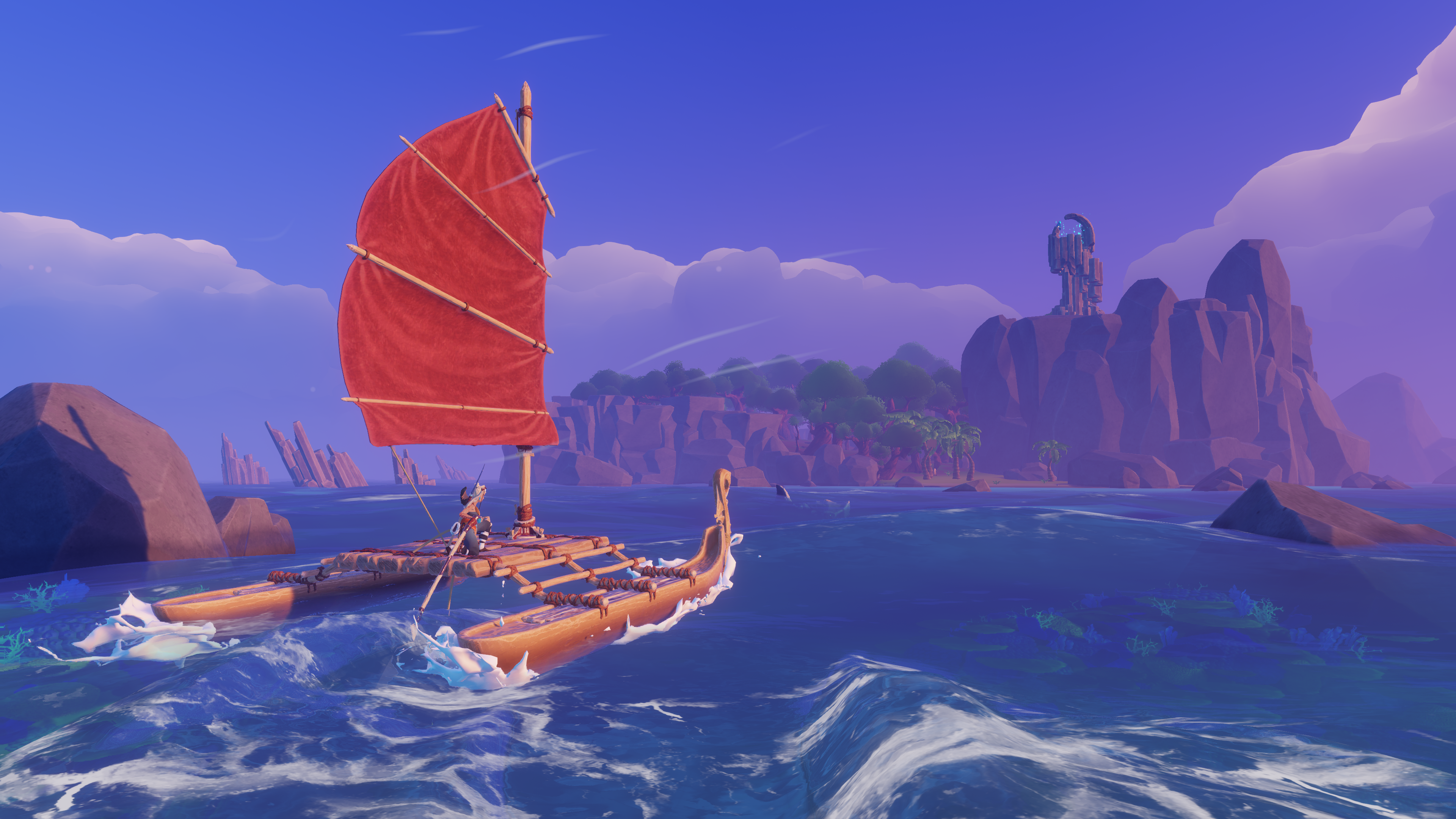
The sailing isn’t supposed to be realistic nor does it simulate actual ocean activity, but it feels right. There’s very little on-screen to tell you where to go or which way the wind is blowing, again, the game leaves this for you to figure out. Thankfully, it’s as easy as spotting the swirls of wind to tell you which direction the wind is blowing. You don’t want to open your mast against the wind, but into it. It feels good and responsive, and I could spend ages plodding along riding the waves, until I’m disturbed by a creature of the deep that is, or the need for nourishment.
The story, unfortunately, falls into the background, instead, it lets the gameplay do the work. Ordinarily, I wouldn’t like this; I’m a story player and enjoy a good tale. In Windbound, I didn’t really mind. The core gameplay loop of keeping myself stocked, fed, and able to flee at a moment’s notice was enough to keep the winds in my sail.
Windbound PS4 Review
-
Overall - Fantastic - 8/108/10
Summary
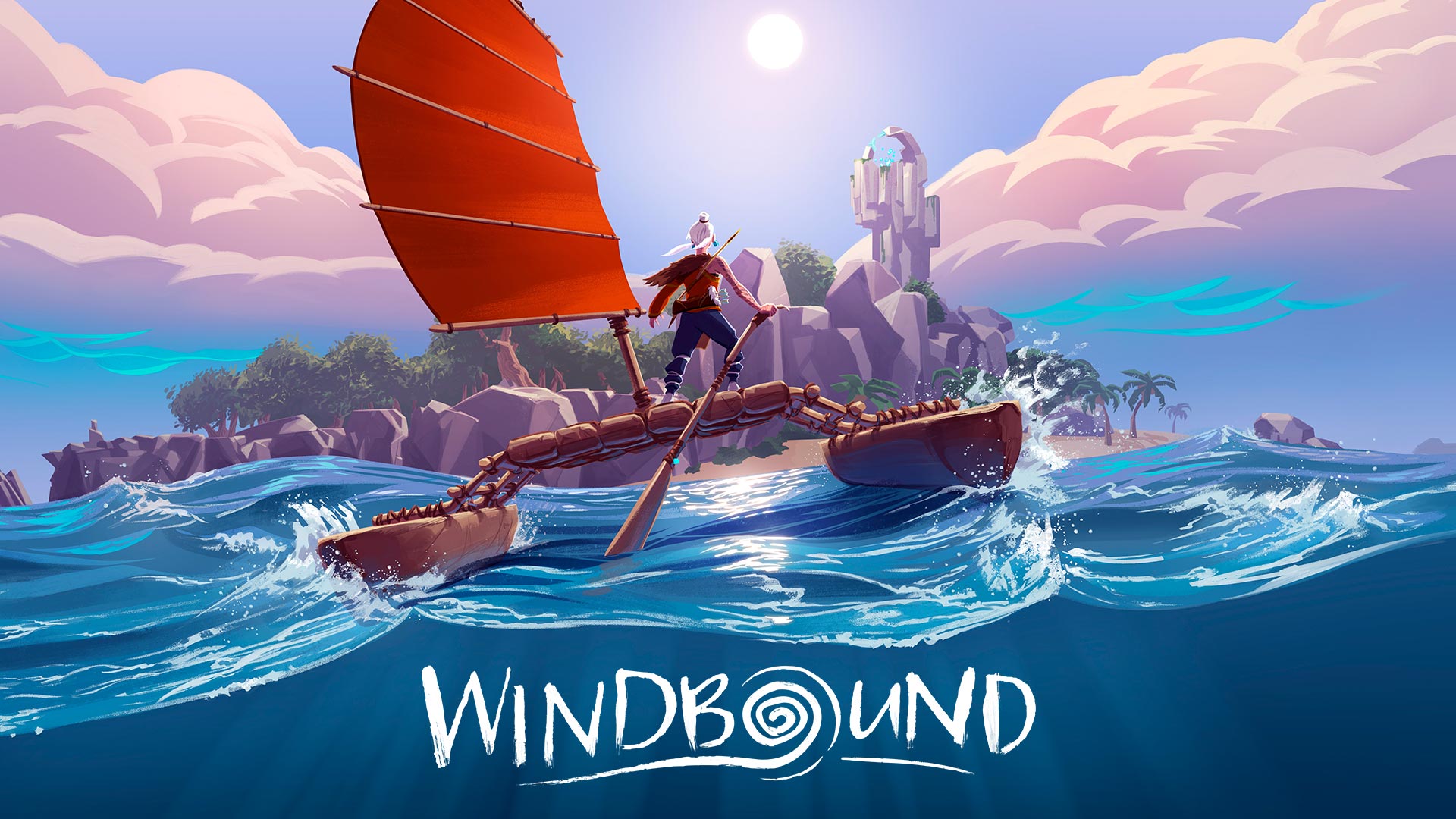
Windbound may look like a Zelda knock-off, but it has a lot more going for it. The core gameplay is solid as a rock, and aside from some niggles with combat and the pressure to survive, it’s a really fun game.
Review Disclaimer: This review was carried out using a copy of the game provided by the publisher. For more information, please read our Review Policy.
Reviewed using PS4 Pro.


